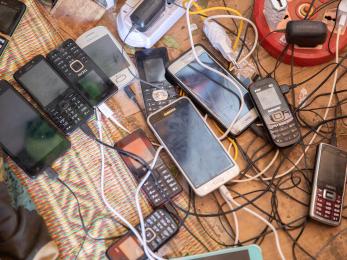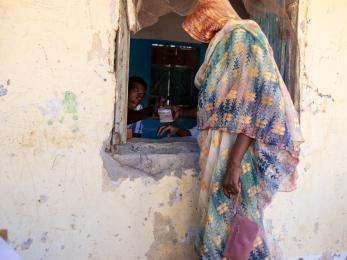Delivering Impact through US Foreign Assistance
Recommended Actions for the Trump Administration
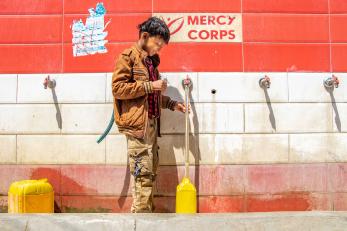
As the Trump Administration takes office, the global development and humanitarian landscape is uncertain and the challenges facing it feel more entrenched than ever before. Yet, this moment also presents an opportunity to chart a new course for US foreign assistance and strengthen its capacity to address these pressing issues. Building on a strong foundation of leadership and innovation, the incoming administration can maximize the effectiveness of investments and strengthen the US government’s collective capacity to respond.
Nearly five years after the COVID-19 pandemic began, the global economy continues to struggle with equitable recovery. In 2020, for the first time in two decades and the populations most at risk have yet to recover. Over the next five years, the impacts of climate change will push even more people into extreme poverty.
Over the past three decades, violent conflict has become more widespread and deadlier, leading to protracted crises that remain unresolved, and continue to cause unprecedented levels of global displacement and humanitarian need. Conflict and violence intensify humanitarian crises, reverse progress in development, increase food insecurity and malnutrition, and impede women’s rights. By 2030, 60% of the world’s poor are predicted to live in fragile countries, where governments and markets are too weak to protect their citizens from the impact of repeated economic shocks and crises.
These challenges do not exist in a vacuum. In an interconnected world, global challenges impact Americans at home. Effective and sustained U.S. engagement in humanitarian and development response is not only a moral imperative, but also a strategic one. Investments in foreign assistance mitigate destabilizing forces, counter malign global actors and deliver tangible benefits: children gain access to education, families receive life-saving medical care, communities secure clean water, millions find paths out of hunger. In short, the world becomes more prosperous and stable.
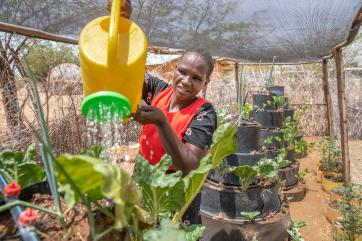
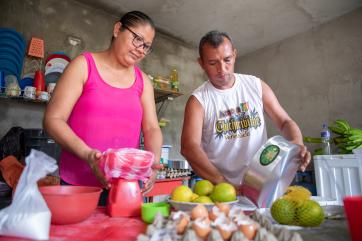
Despite recent setbacks, U.S. foreign assistance has driven substantial progress. The first Trump administration expanded humanitarian tools, increased focus on the journey needed to create self-reliance and launched the International Development Finance Corporation to engage the private sector, and prioritized resilience-building. They also expanded coordination to focus on fragility and maintained strong investments in resilience building and U.S. humanitarian leadership.
There are still opportunities to further strengthen U.S. foreign assistance programs through reforms and new ideas, but accounting for less than 1% percent of the federal budget, U.S. funded humanitarian and development work is a small but powerful investment with exponential benefits abroad and at home.
To further U.S. support and strengthen US global leadership the Trump administration must:
Invest in U.S. humanitarian and development leadership.
Robust funding for foreign assistance will help ensure stronger allies, mitigate risks from fragile states, and demonstrate the value of U.S. partnerships. Continued investment in both emergency humanitarian assistance and longer-term development programs save lives and alleviate immediate suffering and empower communities to break the cycle of poverty and withstand future shocks.
Break the Cycle of Crisis by Confronting Global Fragility.
To protect investments in the global economy and national security, reducing global fragility and preventing violent conflict must be core objectives of all United States (U.S.) foreign policy and foreign aid investments. A paradigm shift under the Trump Administration will require bold approaches that cut across development, humanitarian, and peacebuilding solutions to dismantle bureaucracies, reward innovation, and – ultimately – secure peace.
Strengthening U.S. Foreign Assistance and National Security through Locally Led Development.
Localization must be a core component of the Trump administration’s strategy for U.S. humanitarian and development initiatives. By empowering local actors and providing USAID with tools to help local actors, the Trump administration can increase cost-effectiveness of foreign assistance, ensure long-term self-reliance of partner countries, and reduce aid dependency.
Efficiency and effectiveness in the face of constrained resources and increasingly protracted crises.
By mitigating instability, countering extremism, and protecting vulnerable populations, U.S. humanitarian response reduces risks, lowers long-term costs, and strengthens global security—benefiting America. Given the scale and scope of today’s crises, the Trump administration has a critical opportunity to uphold American humanitarian relief efforts worldwide and implement reforms to maximize impact.
Promote Economic Opportunities through comprehensive Engagement across the Economic System.
Boosting productivity, strengthening markets for greater resilience, and enhancing financial stability is critical to sustained economic development. Agencies like USAID and the U.S. International Development Finance Corporation must use all the tools in the toolbox to focus on stabilizing markets, building quality infrastructure, and igniting inclusive, durable growth.
Secure U.S. Impact and Community Resilience Through Climate Adaptation.
Maintaining and advancing climate adaptation within U.S. humanitarian and development response provides a clear opportunity for the Trump administration to strengthen the impact and durability of U.S. foreign assistance investments while also addressing the looming national security threat of extreme climate disasters.
Double down on proven food security investments, such as the U.S.’s flagship program, Feed the Future.
The U.S. Global Food Security Strategy should be refreshed to further emphasize efforts that increase the resilience of communities, prevent malnutrition, and support their integration into sustainable, successful markets with the goal of poverty reduction and self-sufficiency.
By leveraging these opportunities, the Trump administration can ensure U.S. foreign assistance remains a cornerstone of global leadership, delivering lasting impact for vulnerable communities and strengthening global stability.
At Mercy Corps, we work alongside local partners to respond to crises and develop the capacity of communities to lead their own development. With support from the United States government, other donors, public-private partnerships, and everyday Americans, Mercy Corps programs enable communities to endure crises, adapt to emerging challenges, and build a foundation for a thriving future. Mercy Corps is dedicated to maximizing the impact, innovation, and efficiency of United States foreign assistance investments, partnering with USAID, State Department, and USDA to implement humanitarian, development, and peacebuilding programming in places affected by fragility and crisis. Mercy Corps currently operates in more than 40 countries around the world, reaching over 30 million people in 2023 alone. This experience demonstrates the critical nature of U.S. foreign assistance and how it can be most effectively deployed.
